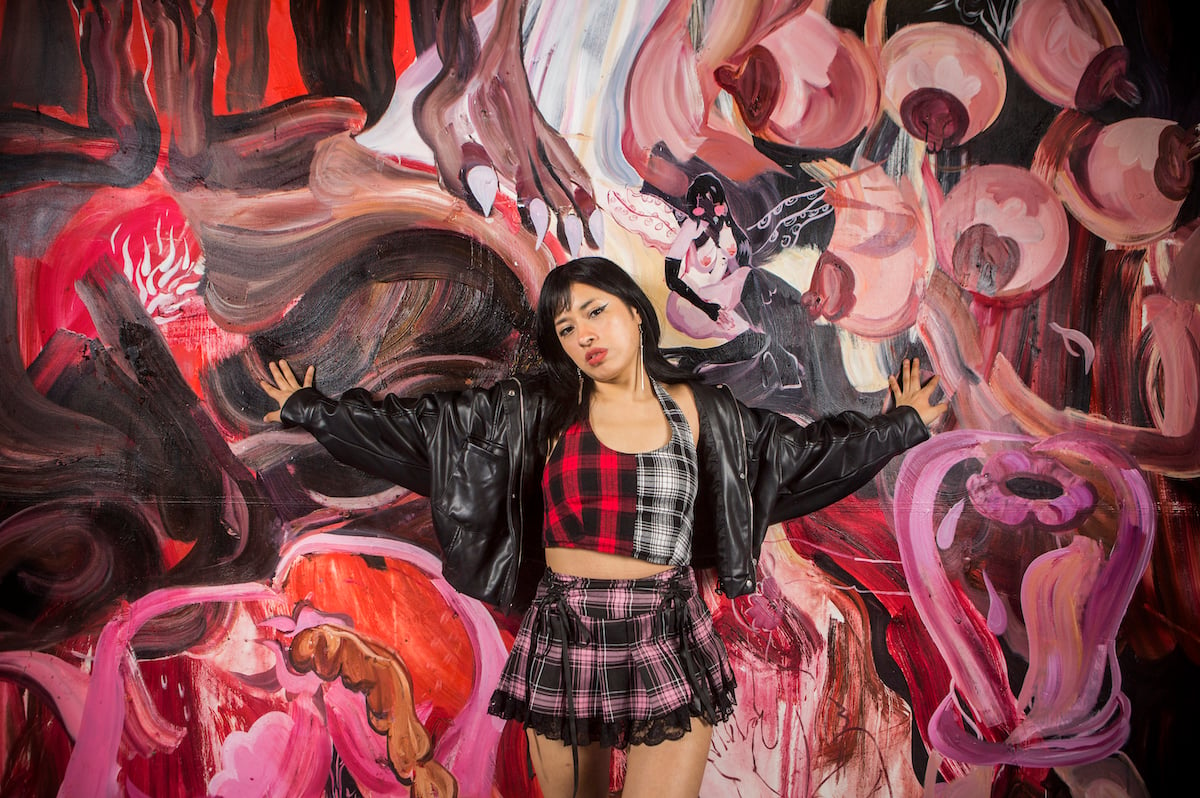
There is a patriarchal bent to many creation myths. In Christian teaching, God made Adam from dust and Eve from Adam’s rib; the woman is both a product of the man and the cause of his downfall—the purveyor of the forbidden fruit. In Judaic and Mesopotamian lore, Adam was created alongside Lilith, but after refusing to submit to sex, she is banished from Eden and damned to life as a demon.
On view now at the New Museum is 65-foot-long panoramic painting—the largest ever displayed at the institution—that offers a different account of life’s origins. The Original Riot (2023), made by Peruvian artist Wynnie Mynerva, reimagines the myth as a syncretic story of rebellion wherein Eve and Lilith team up in an alliance against Adam.
The canvas’ climactic scene shows Eve giving her lowest rib—commonly called the “Adam’s rib”—to Lilith as a symbol of their pact. The work, Mynerva told Artnet News, proposes a “first necessary rebellion—a riot that challenges the control of bodies by higher powers that are always male.”
But for the 31-year-old artist, the token exchanged between the women is more than just a metaphor. Mynerva’s own Adam’s rib, recently removed in a surgical procedure, is also on display in the museum.
“My body, as a descendant of Eve, breaks the myth and removes Adam’s body from my own body,” they said of the artwork, Remnant of the first cut (2023).
An installation view of Wynnie Mynerva’s The Original Riot (2023) at the New Museum in New York. Courtesy of the New Museum. Photo: Dario Lasagni.
The exhibition, also called “The Original Riot,” is Mynerva’s first solo museum outing in the U.S. It’s a helpful introduction to their practice—a world of gender fluidity and sexual expression, of visceral paintings and radical body modifications. The artist has shown paintings the size and shape of half-pipes, and presented people copulating in latex bags. They once sutured their vagina shut to “open different possibilities of existing.”
Often, Mynerva’s work evokes religious themes—a relic of their youth growing up on the outskirts of Lima, where Catholicism is predominant. They have since distanced themselves from religion, but the iconography still looms large.
“The first time I prayed I had terrifying nightmares with God,” Mynerva recalled. “Somehow his presence overwhelmed me and made me feel a lot of guilt. Since then, I have always lived with those images. For me, they became fantastic characters: gods, goddesses, anti-heroes.”
Their paintings, like The Original Riot, tend to be extraordinarily large. The scale feels like a pointed gesture unto itself—a defiant reclaiming of space. By design, many are simply too big to buy.
“My paintings seek a scenic, theatrical, panoramic quality,” they said. “I intend to offer more than just consumer objects. The paintings are an experience for a community and not just for private pleasure. They are not easy to acquire by individuals, but are designed for public exhibition.”
“Wynnie Mynerva: The Original Riot” is on view at the New Museum in New York through September 17.